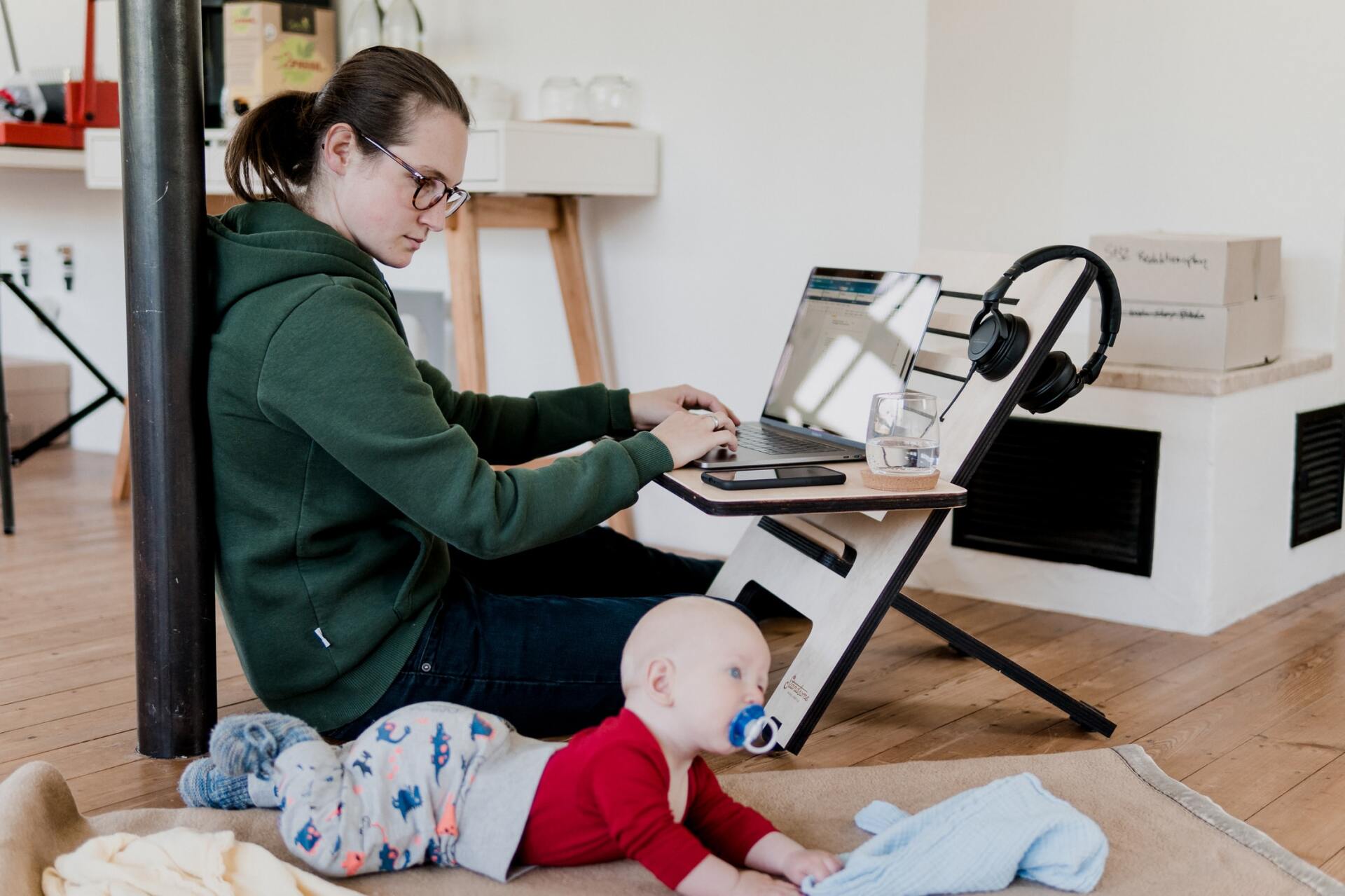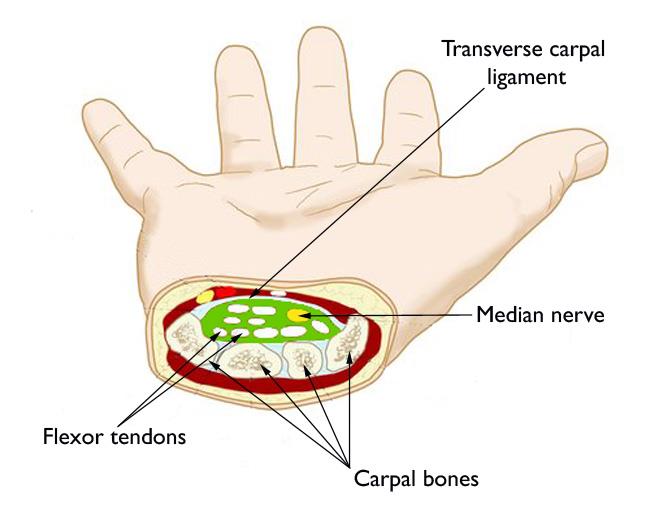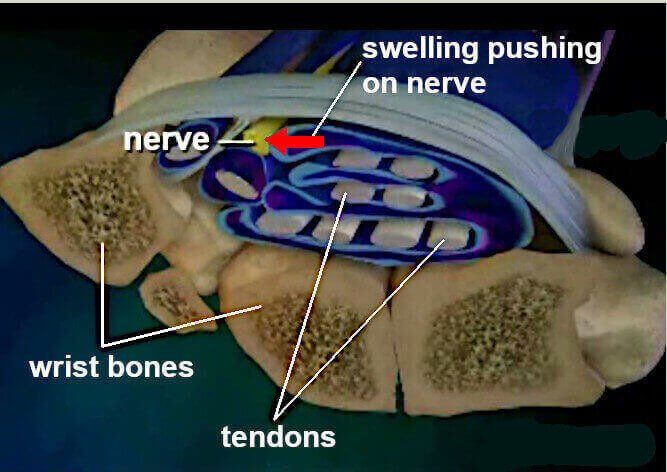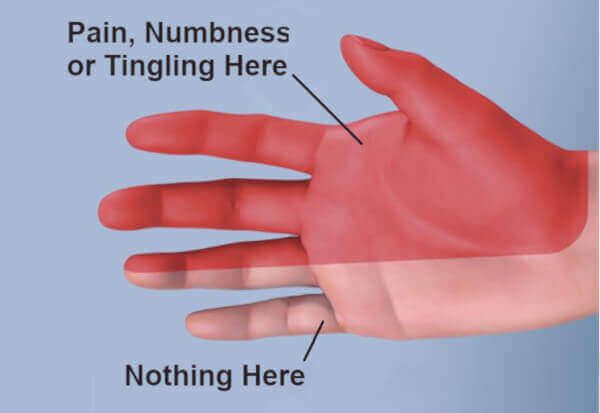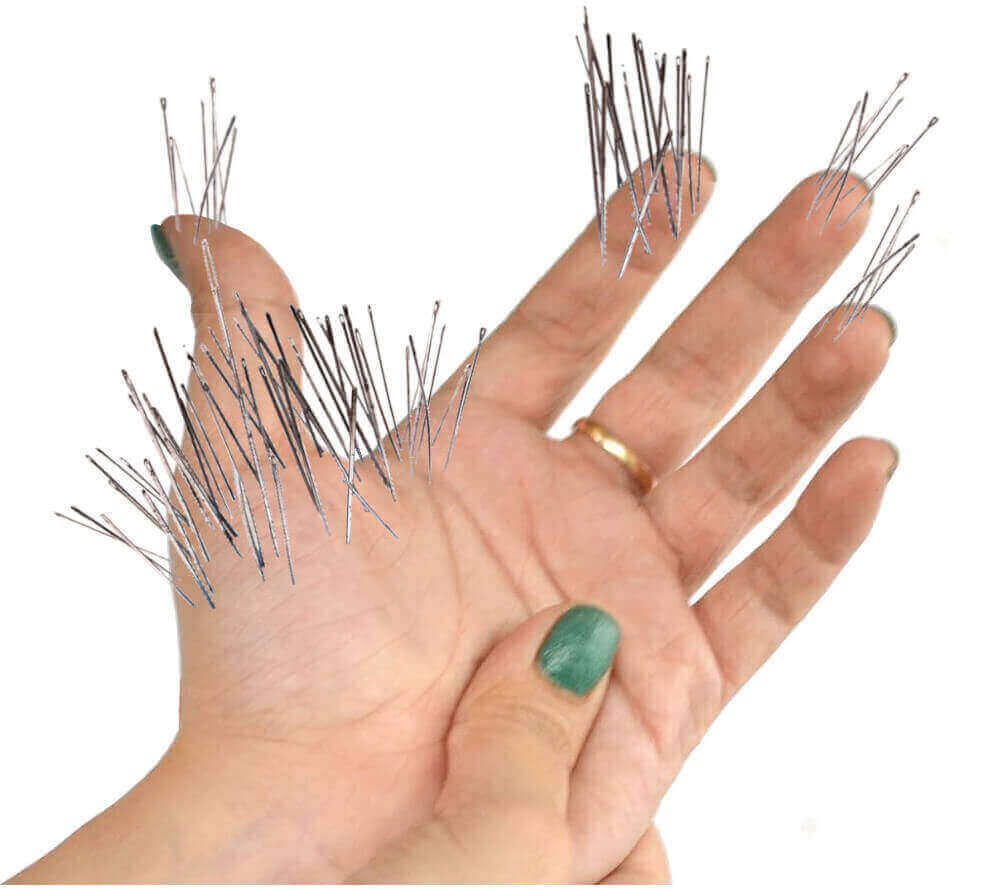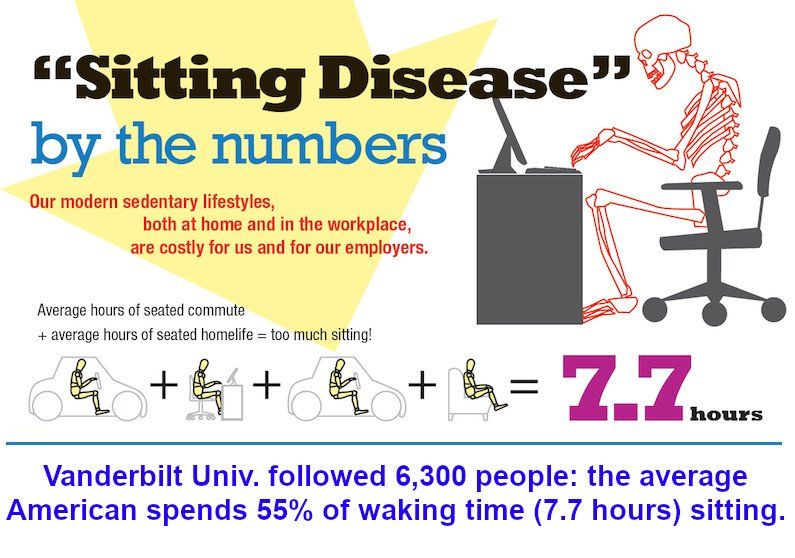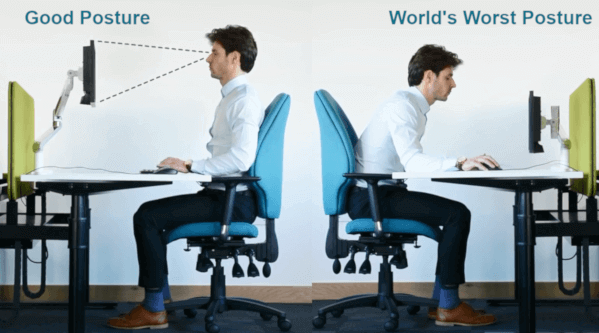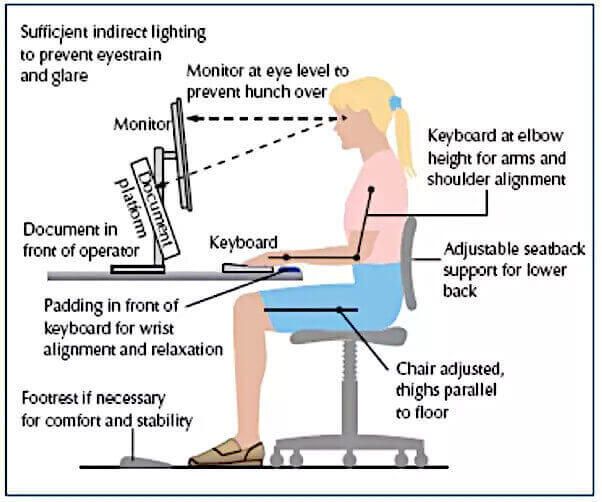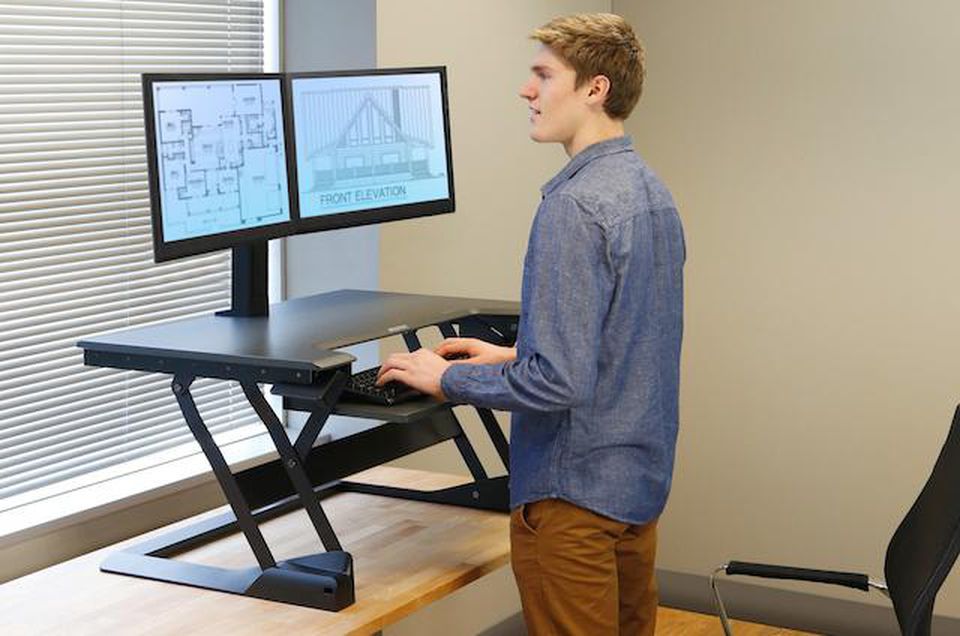Guide to COVID-19 & Carpal Tunnel Syndrome
From Dr. Z - Carpal tunnel syndrome specialist
COVID-19 Pandemic & the Rise in Carpal Tunnel Syndrome
How on earth are COVID-19 & carpal tunnel related? They most certainly are, but actually it’s an indirect relationship.
We know the COVID-19 virus has caused a worldwide pandemic. And the pandemic has forced many people to work from home. Even after the pandemic has eased, more people work from home than ever.
Generally speaking, the ergonomics of working from home are poorer than working from an office. And poor ergonomics lead to various musculoskeletal disorders, like carpal tunnel syndrome.
Hard analytical data and population surveys about this relationship are still lacking. But anecdotal reports abound. Doctors are seeing a dramatic uptick in cases of carpal tunnel syndrome due to work-from-home environments. Worker's Compensation attorneys are also seeing a similar rise in carpal tunnel syndrome claims.
This article highlights the link between ergonomics (especially at home) and carpal tunnel syndrome.
What is carpal tunnel syndrome?
It begins with swollen flexor tendons
Even before the COVID-19 pandemic, carpal tunnel syndrome was one of the most common musculoskeletal disorders seen by doctors. It afflicts over 5 million Americans. And prior to the pandemic, there were over 240,000 new cases reported each year.
This disorder actually begins with your flexor tendons. These are the ropey structures on the front side of your forearm responsible for curling or tapping your fingers.
Under certain conditions like repeatedly stressing them, these tendons become irritated. And when that happens, they inflame and start to swell.
But if they swelled only in the forearm you would have wrist tendonitis.
Wrist tendonitis is classified as a Repetitive Strain Injury or RSI. It causes pain in the affected tendon. But simple rest and avoiding any stressful finger activity will allow the tendonitis to heal naturally – usually within about 2 weeks.
Swelling in the carpal tunnel space
Tendon irritation and swelling anywhere along the forearm causing wrist tendonitis isn’t so terrible. But if flexor tendon swelling occurs inside the wrist joint, in a space called the “carpal tunnel”, then something special happens.
As the illustration below shows, this space is already jam-packed with tendons, blood vessels, and the median nerve. And all of them pass through this “eye of the needle” in the wrist that’s no wider than a kidney bean.
The median nerve is the most sensitive tissue within this crowded carpal tunnel space. And it's a major nerve of the hand. It transmits sensory information like touch, pain, and temperature feelings to the brain. And like all nerves, it doesn’t like being touched, crowded or compressed.
The problem arises when the swollen flexor tendons inside the carpal tunnel space engorge so much that their swelling pushes against the median nerve. In fact, the swelling can be so forceful that the expanding tendons actually crush the median nerve.
It’s this crushing action of the median nerve by the swollen flexor tendons which causes all of the symptoms of carpal tunnel syndrome.
This is why carpal tunnel syndrome is a special type of peripheral neuropathy called an entrapment neuropathy. That means the median nerve gets trapped and compressed by surrounding tissues inside the writ joint.
How you get carpal tunnel syndrome
Finger strain
The flexor tendons are responsible for making your fingers curl, grasp, pinch, and tap. They allow you to perform tasks like grip cooking utensils, use a mouse, type on a keyboard, button a shirt, open doors, pick up coins, hold a shovel, and tie shoelaces.
In some people, too much of any of these activities can cause tendon irritation and injury. And when flexor tendons are injured, they swell.
That tendon swelling compresses and crushes the median nerve. The damaged median nerve causes pain, numbness, tingling, and other
carpal tunnel symptoms.
But what causes the flexor tendons to become inflamed and swollen to begin with? Actually, nobody knows for sure.
It’s clear that in some people, the flexor tendons are more sensitive to injury than in other people. That means they are more easily damaged by stress and strain. Of the many possible causes of carpal tunnel syndrome, most are related to having a more sensitive median nerve or tendons.
Some people are
genetically programmed to get carpal tunnel syndrome. There’s no doubt it is more prevalent if your close relative (parent or sibling) has it. And if you’re a
woman,
pregnant, or have
rheumatoid arthritis, your chance of getting it rise dramatically. These and other
risk factors can increase your chances of seeing carpal tunnel symptoms at some point in your life.
Symptoms of carpal tunnel syndrome
The symptoms of carpal tunnel syndrome appear on the palm of the hand as well as the first 3 fingers. Only half of the ring finger is affected. The little finger is never involved. Usually the thumb and forefinger exhibit the most intense symptoms.
Initially, as the disorder slowly begins, the symptoms only appear at night while trying to sleep. Patients often complain that they have to wake up to shake out a numb hand and fingers.
But other symptoms may appear as well. These initial "hallmark" symptoms in the hand and fingers are:
In time, and as the condition worsens, so do the symptoms. They will appear when you wake up as well as during the daytime. The symptoms will also become more intense.
Hand weakness and clumsiness become more pronounced. The initial (mild) stage of carpal tunnel syndrome is easiest to treat (without surgery). And symptoms can usually be reversed completely.
As you enter the stage of severe carpal tunnel syndrome, symptoms advance even further. They include loss of finger sensitivity to hot or cold temperatures. You experience catastrophic loss of dexterity and hand strength. Your thumb muscle is also beginning to die. Successful treatment at this stage is challenging.
Without prior intervention, end stage carpal tunnel syndrome finally ensues. This means catastrophic loss of feeling in the fingers and palm. Ironically, pain diminishes because the median nerve has died. Your hand becomes relatively useless. In most people, the hand forms a “claw” due to lack of nerve input. Treatment is not possible at this stage.
Rise of non-viral disorders during the pandemic
The pandemic is already known to have caused a number of disorders that have nothing to do with actual viral infection. These disorders are more related to working from home or being isolated. The primary problems include:
- Musculoskeletal disorders
- Gastrointestinal problems
- Depression
- Alcoholism
- Drug abuse
- Insomnia
- Weight gain
- Increased falls
- Joint pain
- Chronic stress
- Brain fog
- Dry eyes
It’s still too early for formal studies to give us hard data about carpal tunnel syndrome. But reports from doctors in North America abound. And new claims are flooding into Workman’s Compensation lawyers every day. In short, wrist pain and carpal tunnel syndrome cases are on a sharp rise.
The Atlantic reports up to 89% increase in musculoskeletal disorders in general , where carpal tunnel syndrome is chief among these disorders. Back pain and neck pain are the next most common complaints.
All of these problems point to poor ergonomics. The overall effects of poor ergonomics and poor posture have given rise to the term sitting disease. It’s so impactful that an American Cancer Society study revealed a sobering fact. Women who sat over 6 hours per day were 94% more likely to die than women sitting for 3 hours during the same study period. For men, it was 48%.
Effect of poor posture on the body
You might be thinking, “I’m safe because I take breaks from work and other precautions to protect my fingers.” And you’re right to feel secure in that thought.
But your flexor tendons can ultimately crush the median nerve in ways not associated with repetitive finger stress or strain. Specifically, your
posture plays a big role. Here’s how.
Balanced forces in the body
Think of your body as a precisely build brick wall. Like the image above shows, when all of the bricks are the same size and placed neatly and evenly, the wall forms perfectly straight vertical and horizontal lines.
Now imagine if just one odd brick is too large or is misplaced. The lines will no longer be straight. Lines many layers away will be wavy because they feel the effect of the odd brick somewhere else. The optimal interconnection between bricks is lost.
Our bodies are constructed in a similar, interconnected way. The human body is exquisitely balanced in terms of biomechanics. And it functions with maximal efficiency in certain physical positions. A deviation from that optimal biomechanical position somewhere in the body can strain seemingly unrelated body parts much farther away.
Poor posture unbalances the body
Sitting upright at a desk in a proper typing position maximizes the body’s biomechanics so that it operates optimally. Conversely, slouching or hunching over a keyboard disturbs the upper body and the forces trying to keep it in balance. As a result, the body applies opposing forces in order to maintain balance.
But those opposing forces don’t come free. They are recruited from other areas of the body to make up for the unbalanced forces. And guess where the forces to counteract slouching and hunching are recruited from? The neck, back, shoulders, arms, and hands.
Removing even a little of the (optimally balanced) forces from the arm and hand disturbs the normal anatomy of the hand. And we already know that the median nerve is supremely sensitive to changes in the surrounding anatomy.
Therefore, just a slight change of the wrist’s anatomy (to compensate for the slouching and hunching) can result in crushing of the median nerve.
Voila!
Carpal tunnel syndrome ensues.
Poor posture resulting in carpal tunnel syndrome
As a result of poor posture (like slouching or hunching) carpal tunnel syndrome can result. When we’re sitting in an office, we tend to be more conscious of our appearance. So slouching and hunching are generally kept to a minimum.
But at home it’s a different situation altogether. With the advent of COVID-19, more people work from home than ever before.
Yes, it feels good to be in your comfortable surroundings. Perhaps you’re even in your pajamas while getting that important report completed on time.
Working at home and in your pajamas is fine and cozy. But more than likely you’re not paying attention to your posture. In fact, you might even be curled up on a couch or lying in bed while typing. That might be comfortable but it’s a BIG mistake!
Doctors and scientists believe this is the reason for the huge uptick in cases of carpal tunnel syndrome since the advent of COVID-19.
What can be done?
Now that you know carpal tunnel syndrome can also be caused by poor posture, the answer is simple; pay attention to your posture. Even at home, good ergonomics is the key.
Good posture starts by siting properly at the keyboard. That means following these tips. You’ll also find they help avoid neck, shoulder, and back pain. Use the illustration above as a guide.
- Make sure your body and legs make right angle bends (relative to the floor) as much as possible.
- Keep your hands and arms straight and next to your body.
- Use an
ergonomic mouse. I recommend a
vertical mouse.
- Make sure the computer monitor is at eye level so you don’t bend your head and neck. This is more difficult when using a laptop. So find a happy medium where you look down a little while your hands are bent up slightly.
- Don’t crane your neck forward. Your head, neck, and spine should be in line and vertical.
- Never slouch or hunch over the keyboard.
Note about proper lumbar posture
Key to good posture is when the lumbar spine is in the correct position. To achieve this while working, I personally have always recommended using a lumbar chair or an ergonomic chair. Alternatively, you can use a standing desk.
A lumbar chair is not the same thing as a chair with a lumbar support. A lumber chair is also called a kneeling chair. It forces you to maintain a good lumbar position.
An ergonomic chair has lumbar support. Most people find this the most comfortable work chair. Money.com offers some of the best tips and reviews of ergonomic chairs at various prices.
Many biomechanics scientists advocate standing instead of sitting. So a standing desk is the way to go. Standing desks vary greatly in design. For the best bang for the buck, again money.com recommends the 6 best standing desks. They range in price from $100 to over $700.
Consult your doctor before using these desks. It’s also important to set them up properly. Finally, you must get used to a standing work position. Gradually ease into it. Initially, take frequent breaks with both a short walk and a relaxing sit. These will avoid initial upper body strain until you're accustomed to the desk.
Long-term outlook
Not long ago, we had high hopes of eradicating the COVID-19 virus merely with social distancing and a new class of super-vaccines. But this is not the case.
The reality is that there will be a “new normal” for everybody. In other words, we can forget about life going back to the way it was in pre-pandemic days.
NIH Director Dr. Francis Collins points out some sobering facts about the idea that COVID-19 is here to stay. He says, “We’re not done yet, here in March of 2021.... We are still seeing 60,000 or 70,000 new cases every day. We are seeing the emergence of variants that are causing concerns that they might make this pandemic go on longer than it should."
Dr. Collins also says that “Long COVID” phenomenon should be taken seriously. This is a common outcome of being infected. It means that even though the virus is gone from their body, patients just don’t seem to get better. But we don't understand why.
So let’s settle in and adjust for the “new normal”. Today, about half our workforce is still teleworking. This number will only increase. And as it stands right now, working from home is not healthy.
Therefore, when it comes to preventing carpal tunnel syndrome, we need to re-consider working from home as just plain “working”. Our “home-office” is now our regular office.
Ultimately, we must prepare for the “new normal” by insuring our workplace ergonomics are every bit as good as you had in your prior office. Use those good ergonomic practices at home. It’s the first and best step in preventing carpal tunnel syndrome.
Conclusion
The huge uptick in cases of carpal tunnel syndrome has been attributed to working from home due to the COVID-19 pandemic. While working from home there’s a tendency to be more laid back, and to pay less attention to your sitting posture. As a result, slouching or hunching while at a keyboard produces biomechanical stresses which transmit to the hand. The result can be getting carpal tunnel syndrome. Since working from home is the “new normal”, avoiding carpal tunnel syndrome should be prioritized. To avoid it completely, make sure you maintain good posture at your workstation. Use ergonomic remedies like a lumbar chair, a vertical mouse, or a standing desk.


